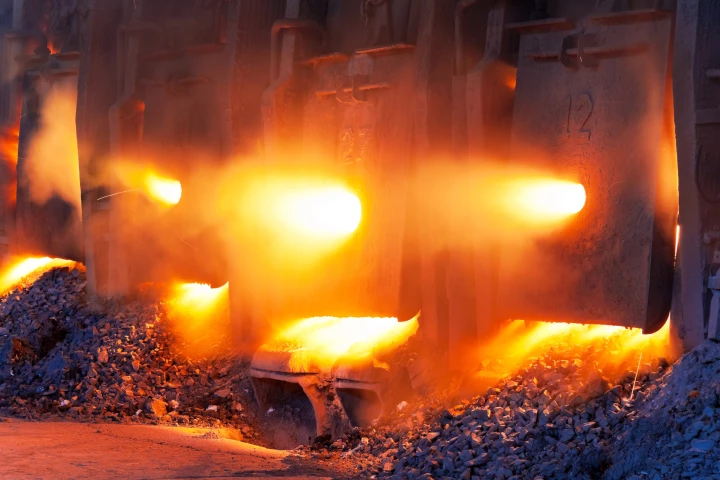Climate Solutions: Iron and Steel
Energy-related emissions from the manufacturing of iron and steel, which form the backbone of many heavy industries, from construction to automotive and shipping. Steel in particular uses a lot of coal-fired furnaces to combine iron ore and limestone with coke (baked coal). There's a strong opportunity here for hydrogen, which can used both to replace the coke in the steelmaking process and to power arc furnaces to replace blast furnaces. Iron, meanwhile, is being investigated for its suitability as a clean-burning fuel source.
-
Transitioning to 100% renewable energy globally would be cheaper and simpler using firebricks, a form of thermal energy storage with roots in the Bronze Age, to produce most of the heat needed for industrial processes, according to a new Stanford study.
-
A rare decarbonization idea that looks as good for business as it does for the planet. This system promises to radically reduce carbon dioxide emissions for 70% of steelmakers, while generating profits and making use of existing blast furnaces.
-
The German steel giant is investing $1.9 billion in a hydrogen-powered direct-reduction system that can create high-quality steel without needing the rare, high-grade iron ore required by most green steel processes. This could open the floodgates.
-
Back In August we saw the world's very first "fossil-free" steel delivery makes its way to Volvo in Sweden, which the automaker has now fashioned into a mining lorry as a beacon of greener vehicle construction.
-
A milestone in decarbonization today as Sweden's SSAB made the world's very first "fossil-free" steel delivery, created with green hydrogen instead of coal and coke, to a customer, Volvo, where it will be used in electric trucks.
-
The world produces more than 1.8 billion tons of steel a year, releasing nearly twice that weight in carbon dioxide into the atmosphere. It's a huge decarbonization challenge, but steel giant ArcelorMittal is starting on a new green plant in Spain.
-
The steel industry is responsible for around 8 percent of all global carbon emissions annually, and decarbonizing it will require an enormous effort. H2GS plans to lead the way with the world's largest fossil-free steel plant, using green hydrogen.
-
Yes, iron. Fine iron powder can burn at high temperatures, emitting nothing but rust as a by-product. That rust can be reduced back into iron powder using renewable energy to create a clean, renewable combustion fuel that could have big implications.







